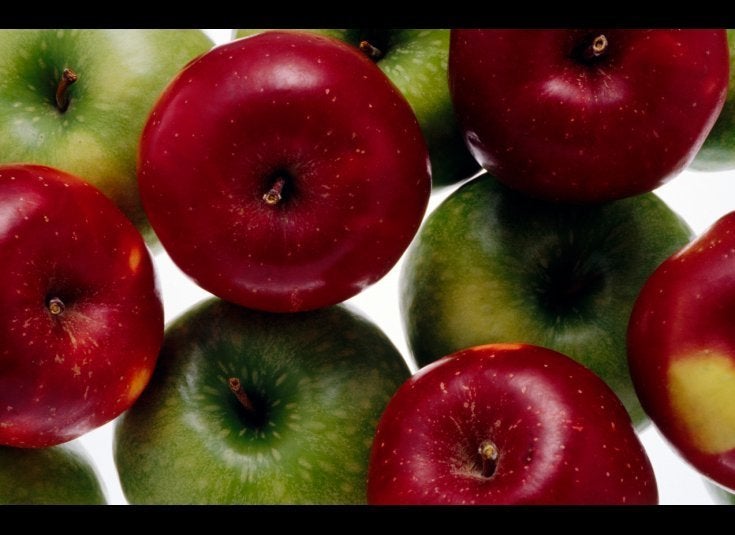Could an apple a day really keep the doctor away? Maybe -- but it may also be coated in pesticides.
Today, the Environmental Working Group, an advocacy nonprofit, released its latest "Dirty Dozen" list of the 12 fruits and vegetables that are most contaminated with pesticides, as an update to its 2010 rankings. And taking first place this year? Apples. The ubiquitous fruit beat out last year's top spot, which went to celery (now at number two).
The health benefits of fruits and vegetables are, without a doubt, a known fact -- reinstating the message was last month's release of the USDA's MyPlate food pyramid replacement, which suggests filling half of your plate with fruits and vegetables.
But the potentially darker side of fruits and vegetables is centered around concerns about their pesticide loads, which some studies have linked to possible health problems, particularly among women who are pregnant and children. So when organic foods typically carry a higher price tag, what's a frugal shopper to do?
That's where the new shopper's guide comes into play (download it here).
"Picking five servings of fruits and vegetables from the 12 most contaminated would cause you to consume an average of 14 different pesticides a day," the group reports in its findings, which were based on data collected by the United States Departure of Agriculture of food samples that often were ready to be eaten (meaning that they had already been peeled or washed as necessary).
On the flip side, EWG writes that choosing foods from their counterpart "Clean 15" list will slash the pesticide volume by more than 90 percent. Topping the "Clean 15" were onions, sweet corn, pineapples and avocado (check out the full list here).
"We have very good data showing that if people eat organic that measurable pesticide levels in their tissues drop, and this has been shown with kids as well," HuffPost blogger Dr. Andrew Weil told EWG last year when they released the 2010 Shopper's List. "I've always said that it would be wise to learn which crops are more likely to carry pesticide residues and in those instance to try to get organic versions or to reduce consumption or avoid the conventional varieties."
Of course, while the EWG encourages going organic when it comes to items on their Dirty Dozen List, they do clearly state that conventional produce is certainly better than none at all: "The health benefits of a diet rich in fruits and vegetables outweigh the risks of pesticide exposure."
Certain members of the produce industry are taking that a few steps further, questioning the validity of the Dirty Dozen list in the first place. The Alliance for Food And Farming recently released this pesticide residue calculator online, with the promise of "putting residues in perspective."
"We understand there might be residues present, but … if you look at our calculator you can see how many servings of this would I or my child have to eat and still not have any health effects," executive director Marilyn Dolan told the Chicago Tribune earlier this month.
EWG's senior analyst Sonya Luder responded in the article, though, saying that the calculator is misleading and doesn't take several health factors into consideration.
And in regards to apples taking the new and dubious number one ranking on the dirty dozen, Luder told USA Today: "We think what's happening to apples is more pesticides and fungicides are being applied after the harvest so the fruit can have a longer shelf life."
The trade association for the produce industry, United Fresh Produce, countered in a statement to CNN, writing, "At a time when medical experts strongly urge Americans to realize the health benefits from eating more fruits and vegetables, it is irresponsible to mislead consumers with a sensational publicity stunt disguised as science."
Check out the brand new Dirty Dozen list here and tell us -- will you be opting for organic?
